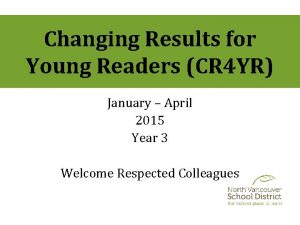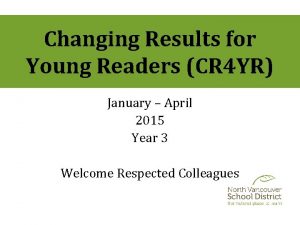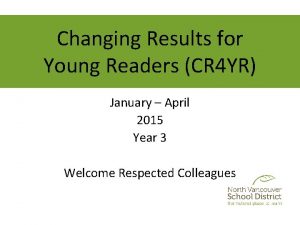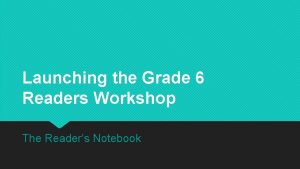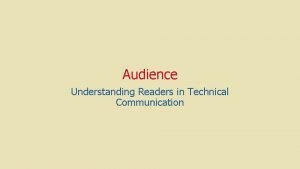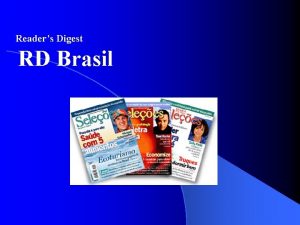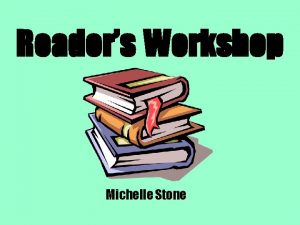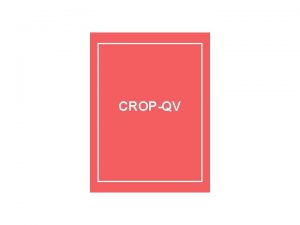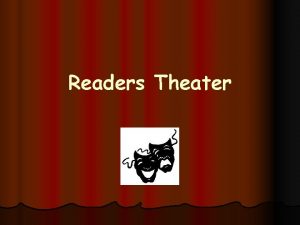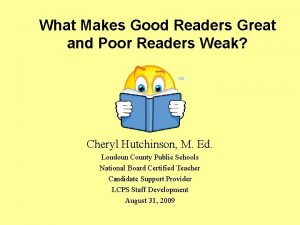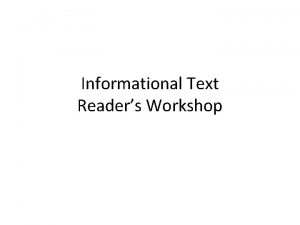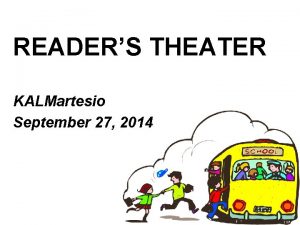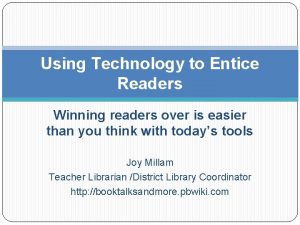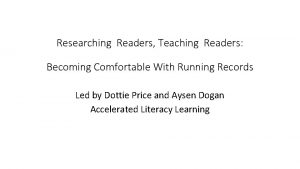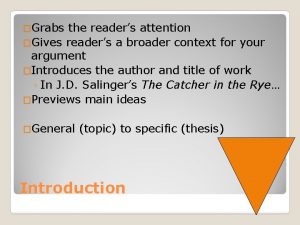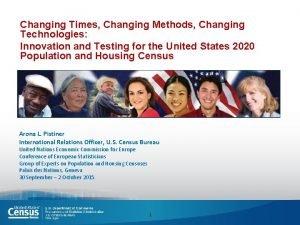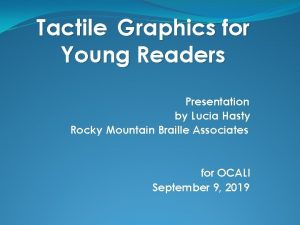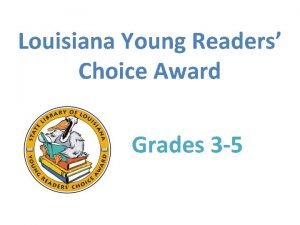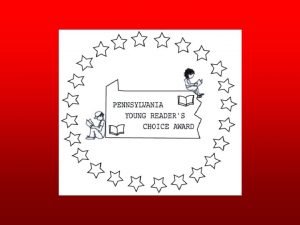Changing Results for Young Readers CR 4 YR












































- Slides: 44

Changing Results for Young Readers (CR 4 YR) January – April 2015 Year 3 Welcome Respected Colleagues

A Provincial Initiative. . . Goal: To increase the number of engaged, successful readers in our province

Snapshot of… • Focus on one child • Opportunity for teachers to collaborate • Teacher inquiry relevant to reading instruction • Collection of provincial data to inform practice

Year 1 and 2 of CR 4 YR • Provincial Framework… • Early Reading Facilitators & Early Reading Advocates • Teams from five schools selected • Seven morning sessions throughout the year • Data collected and submitted to the Ministry

Feedback from Year 1 & 2 • Continued focus on: • • Teacher Inquiry Self- Regulation Aboriginal Worldviews and Indigenizing the Curriculum Best practices for Reading Instruction • Less reflection & more “substance” - strategies for instruction & assessment • More teachers to participate • Fewer sessions • Evidence-based practices for instruction, assessment & intervention for struggling readers

CR 4 YR Project Goals 1. Increase the number of NVSD students who are engaged, proficient readers by Grade 3 2. Maximize the collective knowledge of primary teachers 3. Support a community of practice at all schools focused on improving results for struggling readers 4. Enhance teachers’ understanding of literacy instruction & assessment for the full continuum of learners 5. Establish a district-wide understanding of the Core Components of Literacy Instruction…

CR 4 YR 2015 A new NVSD Leadership Team… • District Early Reading Advocate (Ilona Wardas) • District Leadership Team (FOS Leaders, teachers) – – – – – Kendra Arkinstall Doreen Berg Ann Copp Diana Kilby Anne Lawson Janet Mc. Lean Heather Myhre Shannon Sharp Claire Spofforth Stephanie Weller

A New CR 4 YR Format Session 1 – Building the Foundations for Learning • • Engaging the Literacy Learner and Self-Regulated Learning Differentiated Instruction Indigenizing the Reading Curriculum Misconceptions and Myths regarding Reading Instruction Session 2 and 3– Developmental Stages of Reading • • • Oral Language Phonemic Awareness & Phonics Reading Fluency Vocabulary development Reading Comprehension Session 4 – Putting Research into Action • Assessment Tools, Intervention Strategies, Collaborative Planning

CR 4 YR Websites • HTTP: //CHANGINGRESULTSFORYOUNGREADERS. BCLIBRARIES. CA/ • HTTPS: //CR 4 YRNVSD 44. WORDPRESS. COM/

Big Ideas Strategic teaching practice will have an impact on students’ approach to learning and their success as skilled, proficient, purposeful readers. When learning is examined through the eyes of students Educators can better help students become their own teachers: as critical planners; as receivers of feedback; and as adaptive learning experts.

Learning Targets Session #1 I will enhance my understanding of learner engagement and what is needed to support the growth of the selfregulated learner. I will develop a beginning understanding of Aboriginal Principles of Learning. I will offer and seek collegial support in the assessment and growth of my own practice. Through the process of Inquiry, I will create a plan to incorporate a practice that is different to me so that I can better support one struggling reader. I will leave with a question to explore.

Motivation and Engagement are foundational to Balanced Literacy Learning • Motivation and student engagement – the self regulated learner • Assessment for Instruction • Classroom organization Teaching to Diversity Differentiated Instruction Graphic from: University of Toronto “balanced literacy diet” www. litdiet. org How to Videos Motivation #56

Reading 44 A Core Reading Framework 1999 revised 2004 • Reading Research Tab “To be engaged readers, students must recognize the value of reading and their own potential as readers and learners. Readers need both the skill and the will to read. ” Reading 44 (p 223)

The Inquiry Process Scanning Focusing What does our focus need to be? What’s going on for our learners? Developing a Hunch What is leading to this situation? Checking Learning Have we made enough of a difference? Taking Action How and where can we learn more about what to do? What will we do differently?

Self-Assessment …a place to start… Formative Assessment • A Fearless Inventory • Self assessments will affirm and inform a starting place • Some challenging and provocative statements • Take 10 minutes to yourself • Begin a conversation with your school team about this experience in general or about the statements specifically. Discuss any themes or questions that emerged for you.

The Research Says…. Dr. John Hattie Visible Learning for Teachers Maximizing Impact On Learning , 2012 Professor John Hattie is a researcher in education. Currently the Director of Melbourne Educational Research Institute at the U of Melbourne, Australia since March 2011. Previously, he was a project director and Professor of Education at the U of Auckland, New Zealand. Holds a Ph. D from the University of Toronto, Canada www. visible-learning. org Ranking Ladder Group Task 5 mins

Influences and Effect Sizes Related to Student Achievement 1. (1. 44) Helping students develop high expectations for themselves 3. (1. 07) Response to Intervention 4. (0. 90) Educators providing their colleagues with formative assessment feedback on their teaching practices 6. (0. 88) Direct teaching of phonics to a small group of students who need it 10. (0. 75) Providing feedback to a student on his/her reading fluency 11. (0. 74) Reciprocal Teaching 12. (0. 72) Teacher - Student relationships

14. (0. 69) Teaching meta-cognitive skills (eg: think alouds during reading) 17. (0. 67) Explicit teaching of vocabulary 23. (0. 62) Professional Development / Growth 36. (0. 54 - 0. 6) Phonics instruction for the whole class 46. (0. 52) Interactive Video Methods 91. (0. 31) Inquiry based models of teaching 94. (0. 29) Homework (e. g. spelling lists)

The Struggling Reader What do we see? Reframing our thinking about behavior Anxious about school Lack self confidence What is going on in the learning environment for these kids? Defiant Avoidant Social challenges

Engaging the Literacy Learner “Engagement is strongly related to reading achievement. ” (Guthrie, 2001)

Instructional Contexts for Engagement 1. 2. 3. 4. 5. 6. 7. 8. Learning and Knowledge Goals Real World Interaction Autonomy Support - Choice Interesting Texts Strategy Instruction Collaboration Praise ** Evaluation ** (Guthrie, 2001) **Session #4 will dig deeper into more recent research on the effects of feedback

The Engaged Reader What do we see? Reframing our thinking about behavior Excited to learn – seeks challenges Self confident – strategic Ask questions – seeks feedback What is going in the learning environment for these kids? Curious - welcomes error Makes personal and social connections


Group Conversation • Read and discuss the phrases at your table • In what ways do you connect personally, professionally, collaboratively with these phrases? • Find and discuss evidence of these phrases in your practice and in the learning environment of your school







Brain and Body Break https: //www. youtube. com/watch? v=6 xpc. Xob. ZF 1 k

Self-Regulated Learning Self-Regulation – Brain research, sensory processing, emotional regulation, cognitive regulation, metacognitive strategies UBC Debra Butler and Nancy Perry Self Regulated Learners are: a) metacognitive b) direct emotions and behavior c) motivated for learning d) strategic http: //www. youtube. com/watch? v=ifk. Q 7 Sg. SSQw

Self Regulated Learning Occurs in Classrooms Where…. a) Students’ autonomy is supported b) Teachers provide strategic support c) Teachers engage in non-threatening evaluation practices Canadian Consortium for Self-Regulated Learning http: //srlcanada. ca/

Self-Regulated Learning A big topic with multiple entry points and perspectives. 3 -2 -1 Bridge Strategy • Write 3 words • Write 2 questions about Self Regulation • Write 1 metaphor or simile Ritchhart, Church, Morrison (2011)

UDL Universal Design for Learning Planning for diversity from the beginning…

When Apply UDL to Education… • Multiple means of Representation • Multiple means of Expression • Multiple means of Engagement

Differentiating Learning… • Proactively adjusting teaching and learning methods to accommodate different learning needs

The Starting Point… Differentiation is in how students learn, not in what they learn. Karen Hume The starting point is the learning goal, not the activity.

Group Task Learning Goal: Demonstrate an understanding of the relationships between characters in a story. Anchor task: ? ? ? • Take 5 minutes with your table group to talk about how you would differentiate the anchor task based on student interests and/or abilities • Use the Teaching to Diversity handout


Fact or Myth? 1. Learning to read, like learning to talk, is a natural process. 2. With time, all children will eventually learn to read. 3. Genetics rule: if the child has dyslexia, he or she cannot be helped. 4. If you start at a disadvantage, you will never catch up. 5. After Grade 3, children are done learning how to read. 6. Children can learn to read by relying heavily on context cues. 7. Students can master reading comprehension if they just read, and read. 8. English has so many irregular spellings and inconsistencies that it is impossible to teach. From Foundations of Literacy: An Evidence-based Toolkit for the Effective Reading and Writing Teacher (Canadian Language and Literacy Research Network, pp. 14

Exploding Reading Myths • Please work in a small group for this activity • Read the statements in “Exploding Reading Myths” • Discuss the reasons why you think each of the statements is a ‘myth’ and not a true statement. • Try to provide examples from your own classroom practice

Revisit Learning Targets I will enhance my understanding of learner engagement and what is needed to support the growth of the self-regulated learner. of and to that I I will develop a beginning understanding of Aboriginal Principles Learning. I will offer and seek collegial support in the assessment growth of my own practice. Through the process of Inquiry, I will create a plan incorporate a practice that is different to me so can better support one struggling reader. I will leave with a question to explore.

In Your Seat Door Prize Thank you from your CR 4 YR colleagues
 Changing results for young learners
Changing results for young learners Slidetodoc.com
Slidetodoc.com Fimbrietratt
Fimbrietratt Shingelfrisyren
Shingelfrisyren Karttecken sten
Karttecken sten Vätsketryck formel
Vätsketryck formel Större än
Större än Elektronik för barn
Elektronik för barn Borra hål för knoppar
Borra hål för knoppar Sura för anatom
Sura för anatom Smärtskolan kunskap för livet
Smärtskolan kunskap för livet Bris för vuxna
Bris för vuxna Mat för idrottare
Mat för idrottare Novell typiska drag
Novell typiska drag Trög för kemist
Trög för kemist Vad är ett minoritetsspråk
Vad är ett minoritetsspråk Humanitr
Humanitr Delegerande ledarskap
Delegerande ledarskap Toppslätskivling dos
Toppslätskivling dos Steg för steg rita
Steg för steg rita Tes debattartikel
Tes debattartikel Redogör för vad psykologi är
Redogör för vad psykologi är Lek med former i förskolan
Lek med former i förskolan Bästa kameran för astrofoto
Bästa kameran för astrofoto En lathund för arbete med kontinuitetshantering
En lathund för arbete med kontinuitetshantering Etik och ledarskap etisk kod för chefer
Etik och ledarskap etisk kod för chefer Publik sektor
Publik sektor Olika rim dikter
Olika rim dikter Plagg i rom
Plagg i rom Orubbliga rättigheter
Orubbliga rättigheter Vad är densitet
Vad är densitet Ministerstyre för och nackdelar
Ministerstyre för och nackdelar Jätte råtta
Jätte råtta Nationell inriktning för artificiell intelligens
Nationell inriktning för artificiell intelligens Sju principer för tillitsbaserad styrning
Sju principer för tillitsbaserad styrning Vem räknas som jude
Vem räknas som jude Nyckelkompetenser för livslångt lärande
Nyckelkompetenser för livslångt lärande Ro i rom pax
Ro i rom pax Mästar lärling modellen
Mästar lärling modellen Vad är verksamhetsanalys
Vad är verksamhetsanalys Borstål, egenskaper
Borstål, egenskaper Shivaiter
Shivaiter Cks
Cks Särskild löneskatt för pensionskostnader
Särskild löneskatt för pensionskostnader Verktyg för automatisering av utbetalningar
Verktyg för automatisering av utbetalningar
